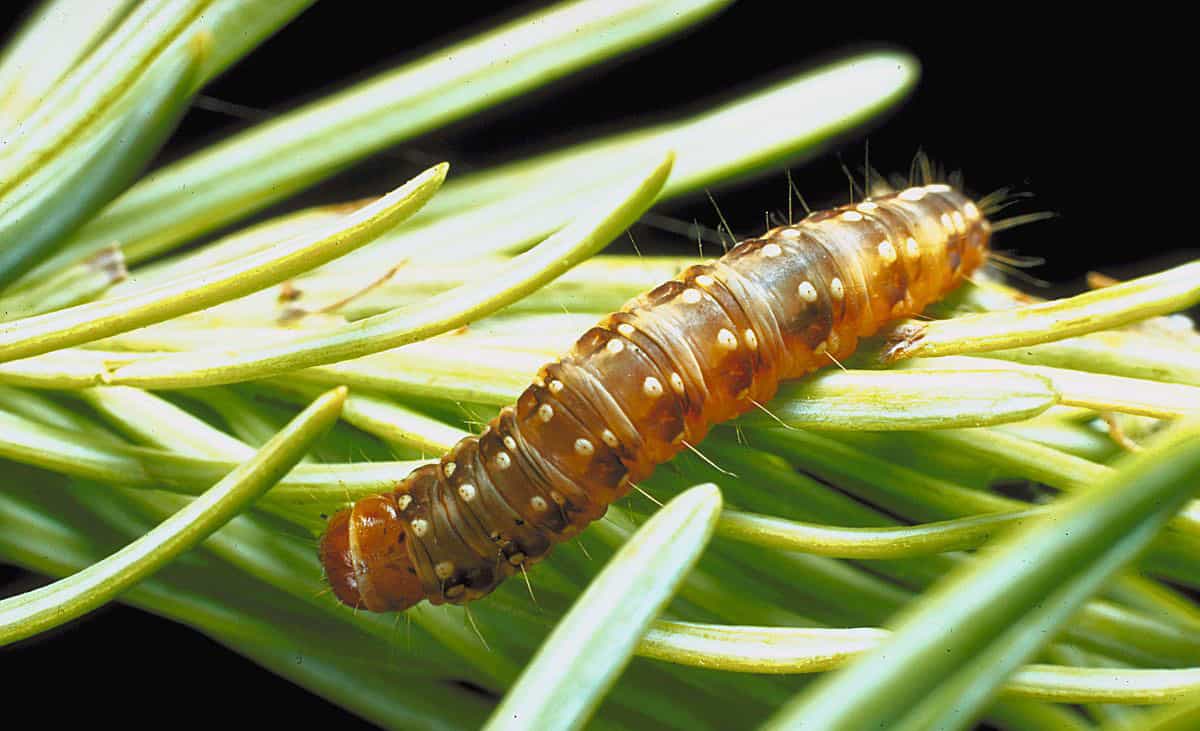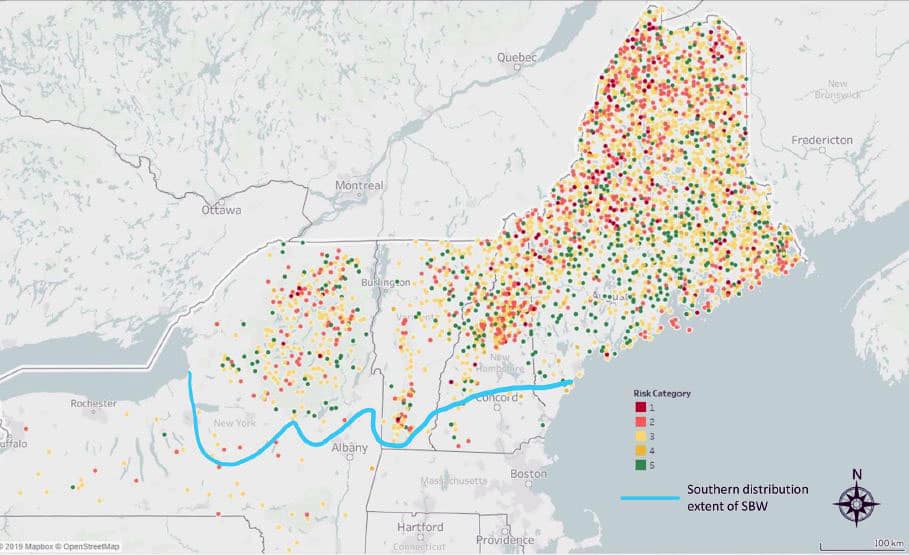 DURHAM, N.H.—The next major eastern spruce budworm outbreak likely will hit the forests in the northeastern United States over the next few years, putting more than 11.4 million acres of forest and 94.8 million metric tons of stored carbon in spruce and balsam fir at risk. While salvaging these trees for energy or lumber increases carbon dioxide emissions in the short-term, researchers at the University of New Hampshire have found that certain forest management practices result in long-term benefits that can balance these short-term setbacks.
DURHAM, N.H.—The next major eastern spruce budworm outbreak likely will hit the forests in the northeastern United States over the next few years, putting more than 11.4 million acres of forest and 94.8 million metric tons of stored carbon in spruce and balsam fir at risk. While salvaging these trees for energy or lumber increases carbon dioxide emissions in the short-term, researchers at the University of New Hampshire have found that certain forest management practices result in long-term benefits that can balance these short-term setbacks.
“Outbreaks from non-native insects such as the emerald ash borer threaten New Hampshire’s forests with widespread loss of native ash trees,” said John Gunn, research assistant professor of forest management and a researcher with the New Hampshire Agricultural Experiment Station. “Given pest threats and the potential for more frequent, large-scale destructive events like ice storms in a changing climate, this research aims to understand the carbon implications associated salvaging dead trees after such an event. If keeping carbon out of the atmosphere is a desired outcome, we wondered if it is better to leave dead trees standing to slowly decompose and emit carbon dioxide slowly, or is it better to harvest that tree and use it for lumber, paper or energy.” Forests play an important role in mitigating the effects of climate change. Carbon dioxide moves in and out of forest ecosystems primarily via photosynthesis and decomposition. If more carbon dioxide is moving into the forest system compared to moving out, then forests act as a “sink” of carbon and provide an ecosystem service that benefits humans.
Forests play an important role in mitigating the effects of climate change. Carbon dioxide moves in and out of forest ecosystems primarily via photosynthesis and decomposition. If more carbon dioxide is moving into the forest system compared to moving out, then forests act as a “sink” of carbon and provide an ecosystem service that benefits humans.
“When an event such as an outbreak of insect pests occurs that kills many trees at one time, landowners who rely on timber revenue often try to minimize financial loss through the ‘salvage’ of dead or dying trees,” said Gunn. “As New Hampshire forest owners saw following the 1998 ice storm, the decision to salvage dead trees had implications for which species grew back and what kind of quality wood products their land could produce. Now, with a greater awareness of the role of forests for mitigating climate change, it is also important to consider the carbon implications of such harvesting decisions.”
Researchers found that when compared to leaving dead trees in the forest, salvaging dead trees generally results in 10 to 20 years of excess emissions. This occurs because of the slow decay of dead wood and the movement of carbon from decaying wood into the forest floor and, eventually, the soil. However, when salvaged wood is used for energy or lumber, it offsets this increase, though some carbon dioxide is released to the atmosphere immediately, especially when wood is used for short-lived products.
“From a policymaking perspective, that period of 10 to 20 years where emissions are greater because of salvage harvesting is an important consideration,” he said. “Climate scientists warn that we need to address near-term emissions, so this outcome is potentially at odds with that objective. However, forests in the long term may be able to provide a better outcome if the risk of future disturbances is low and management decisions across the landscape include carbon storage objectives.”
The research was conducted by Gunn; Mark Ducey, professor of natural resources and the environment and experiment station researcher; Thomas Buchholz, senior scientist with the Spatial Informatics Group of Pleasanton, Calif.; and Ethan Belair, lecturer in natural resources and the environment. It is based on work supported by the NH Agricultural Experiment Station, through joint funding of the National Institute of Food and Agriculture, U.S. Department of Agriculture, under award number 1010675 and 1020142, and the state of New Hampshire. This project was supported by the Northeastern States Research Cooperative through funding made available by the USDA Forest Service and Spatial Informatics Group, LLC.
Founded in 1887, the NH Agricultural Experiment Station at the UNH College of Life Sciences and Agriculture is UNH’s original research center and an elemental component of New Hampshire's land-grant university heritage and mission.
The University of New Hampshire is a flagship research university that inspires innovation and transforms lives in our state, nation and world. More than 16,000 students from all 50 states and 71 countries engage with an award-winning faculty in top ranked programs in business, engineering, law, liberal arts and the sciences across more than 200 programs of study. UNH’s research portfolio includes partnerships with NASA, NOAA, NSF and NIH, receiving more than $100 million in competitive external funding every year to further explore and define the frontiers of land, sea and space.
UNH Research Looks at Long-Term vs. Short-Term Benefits of Salvaging Dead Trees
- Details
- Written by Patrick R. McElhiney
- Category: Articles

